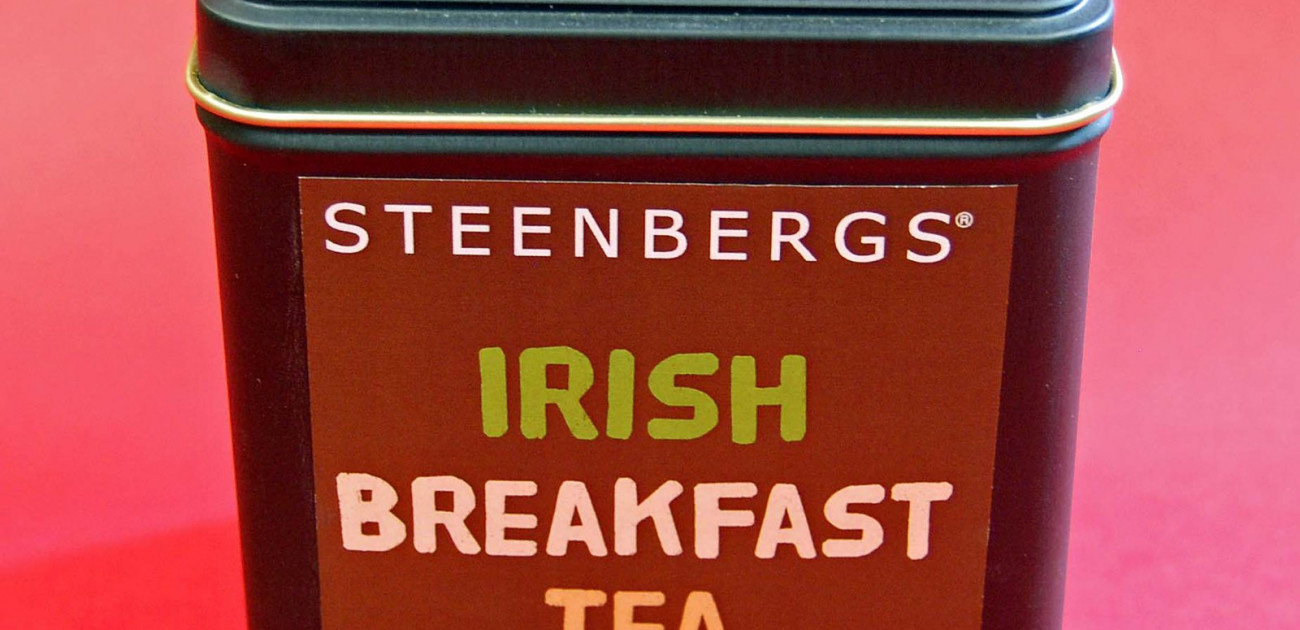18 October 2011
Blending Breakfast Teas (Part 3)

So how to get us started? Well, I decided to start at the end first and to work backwards, so I tried to work out what were the types or styles of tea that we wanted to come out with as products. Basically, we were looking for light, medium and strong teas for drinking in the morning, which would cover China, East Frisian and Irish Breakfast Teas to complement our English Breakfast Tea. The light tea should be drinkable without milk or sugar or brewed stronger and taken with a little milk, while the others would be cuppable with milk and/or sugar. Next, I tried to consider the ways of blending tea and styles of tea that were out in the market. I have drunk a heck of a lot of different teas from tea blenders across Europe and into the USA, plus read old books and magazines that either covered or hinted at how to make tea. Obviously, very little is given away as most tea blends are proprietary and closely guarded secrets, rightly so I might add.
I began with the Light Breakfast Blend which is designed to be drunk without milk or sugar, or just a smidgeon of each if you need to. As a base, I used a sentence I found in “The Girl’s Own Paper” from 1882 on “The Right Way Of Making Tea And Coffee” where it was written “Many grocers mix Moning and Kaisow, and thus furnish an excellent tea.” Taking this as our starter, I blended a number of red and black teas together to create our China Breakfast Tea that harks back to the Regency and Victorian periods. We have Ching Wo tea to provide a red hue and the base flavour, one that is silky, rich, like a lightly oaked wine. This is contrasted to the Keemun varieties for the black-leaf congous that give a richer, fuller and altogether more juicy flavour that in its higher notes has an orchid floweriness. This is a great tea for the morning, giving a gentle ease into your hectic day.

In contrast, the next tea I devised is a more vigorous wake up call. This is Steenbergs’ Irish Breakfast Tea or Strong Breakfast Tea. For this, we have based the tea on a blend of broken Assam teas from a number of different estates, however it is based around a Flowery Broken Orange Pekoe from the fabulous Borengajuli Estate in the Mangaldai district of Assam. This Assam is malty, lightly astringent and full of sweet fruitiness, like a rich strawberry jam, with an herby floweriness from the abundance of tip within the tea. This is second flush Assam at its best. Against this, I have added some Pekoe Fannings for extra colour from another Assam estate and some more flowery tip from Jamguri, a biodynamic estate in the Golaghat district of Assam and part of the Ambootia group, from whom we get our green Darjeeling at the moment. Then to round off the astringency, I have used a couple of teas from Ceylon and Nilgiri that give extra flowery tip and some extra polyphenol power. This tea is an awesome breakfast cuppa that will wake you up.
Then sitting somewhere in the middle, I have made a tea (that I have moulded around samples of Ostfriesen Mischung from various German tea companies, including Dallmayr, Eilles and Thymian Tee) that sits somewhere between the two other breakfast teas. Steenbergs Medium Breakfast Tea is a more flowery and gentler blend of Assam teas that has been topped out with some Ceylon from Lovers’ Leap and Darjeeling second flush teas. The idea here was for a more sophisticated breakfast tea than the typical small leaf breakfast teas, so here we have used mainly Tippy Golden Flowery Orange Pekoe teas from estates like Dekorai (named for the Dickori River in Sonitpur district) and Hazelbank (Dibrugarh district), together with Ceylon teas. All in all this is a good fresh start to your day, combining the malty strength of four different Assam teas with the gorgeous complexity of Lovers’ Leap that is reminiscent of Darjeeling teas. Interestingly, the Darjeeling tea we have used uses the same Assam jat tea bushes as are indigenous to Assam rather than the China jat of most Darjeeling Estates, so here we get the muscatel flavours from the high Himalayan flush but with the body of an Assam coming through – this is terroir over genotype. I have named this Steenbergs' East Frisian Tea in homage of the strong Assam based teas from Northern Germany, although I have made this more subtle by used larger leafed tea and a tiny, teensy amount of Ceylon and Darjeeling to reduce the bitterness that often comes through.
These new teas are designed to complement our classic English Breakfast tea that we have been blending to our own recipe for some years now, and hopefully give our customers a decent choice of flavour types to suit your palates and water. Our English Breakfast tea is more plural, using Assam, Ceylon, Darjeeling and Nilgiri teas, while using a smaller leaf that the East Frisian Tea, so it sits somewhere between Steenbergs Medium Breakfast (East Frisian tea) and Strong Breakfast teas (Irish Breakfast tea). Then Steenbergs’ English Breakfast Tea is organic and Fairtrade as well.
I hope you like something amongst these new tea blends, but as I said in the previous post – anyone who has any hidden little family recipes our classic tea blends that they know , I would love to here about them for curiosities sake.




